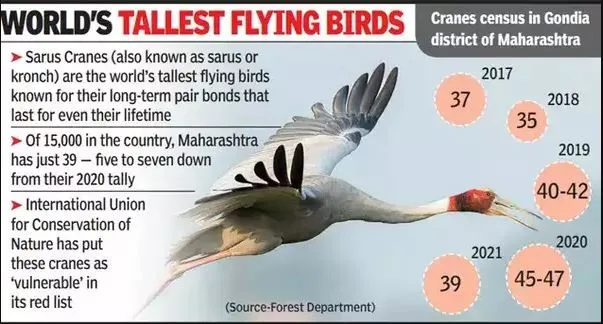Lake Naivasha
Syllabus: GS1/ Places In News
In News
- The water hyacinth invasion of Kenya’s Lake Naivasha has caused severe economic and environmental challenges for local fishermen, reflecting the broader impact of invasive species.
About Lake Naivasha
- Lake Naivasha is a freshwater lake situated in the Great Rift Valley of Kenya.
- The lake is primarily fed by the perennial Malewa and Gilgil Rivers, which flow from the Aberdare Mountains in central Kenya.
- It is designated as a Ramsar Site, emphasizing its importance as a wetland of international importance.
About Water Hyacinth
- The water hyacinth (Eichhornia crassipes) is an aquatic plant native to South America, introduced to Kenya in the 1980s.
- It thrives in polluted waters, as it grows rapidly in the presence of contaminants, making it the most invasive aquatic plant species globally.
Source: TH
Rhodamine B
Syllabus: GS2/ Health
Context
- In India, the rampant use of Rhodamine B in food items has raised significant health concerns.
What is Rhodamine-B ?
- Rhodamine-B or RhB is a chemical commonly used for dyeing in the textile, paper, leather, and paints industry as a coloring agent that helps in attaining the red and pink spectrum.
- In powdered form the chemical is green in color and upon being added to water, it turns pink.
- It is widely used as a food additive in the manufacturing, packaging, import, and sale of various food items.
Why is it harmful?
- According to studies, even if consumed in small quantities, the chemical is highly
toxic and carcinogenic.
- If consumed regularly, Rhodamine-B can cause severe damage to the cerebellum tissue in the brain and to the brainstem that connect the brain to the spinal cord.
- This damage can lead to functional abnormalities and can hinder human motor functioning.
- As per the Food Safety Standards Act, 2006, preparation, packaging, importing, selling and serving food items with Rhodamine-B in wedding ceremonies and other public events is a punishable offense.
- In early 2024, Tamil Nadu and Karnataka banned cotton candy and certain street foods after detecting the harmful dye Rhodamine B in samples.
Source: TH
10,000 Geographical Indication (GI) Tags by 2030
Syllabus: GS3/Economy
Context
- The Union Minister of Commerce & Industry, set a target of reaching 10,000 Geographical Indication (GI) Tags by 2030.
About
- The number of GI tags issued by the department till date stands at 605.
- The number of authorized users for GI tags increased from 365 to 29000 and the number of patents granted increased from 6000 to 100000, in the last 10 years.
What is a GI Tag?
- A geographical indication (GI) is a sign used on products that have a specific geographical origin and possess qualities or a reputation that are due to that origin.
- GIs are part of the intellectual property rights that come under the Paris Convention for the Protection of Industrial Property.
- Administration in India: GI registration is administered by the Geographical Indications of Goods (Registration and Protection) Act of 1999.
- Products: Agricultural products, foodstuffs, wine and spirit drinks, handicrafts, and industrial products.
- Validity: For a period of 10 years, it can be renewed from time to time for a further period of 10 years each.
- Related Facts: The first GI tag in the country was given two decades ago to the famous Darjeeling tea.
- Uttar Pradesh retains its position as the state with the most GI-tagged products in India, reaching a total of 75.
- Tamil Nadu follows behind with 58 GI products.
Benefits of GI Tag
- It confers legal protection to Geographical Indications in India which in turn boost exports.
- Prevents unauthorised use of a Registered Geographical Indication by others.
- It promotes economic prosperity of producers of goods produced in a geographical territory.
Source: PIB
Dhanauri Water Body
Syllabus: GS3/Environment and Conservation
Context
- The National Green Tribunal (NGT) directed the Uttar Pradesh government to place on record the status of notifying the Dhanauri water body as a wetland.
About
- While a state government can notify lakes and water bodies as wetlands to accord them protection, a Ramsar site is given final approval by the Centre.
- Under the international Ramsar Convention treaty of 1971 signed in Iran, wetlands that meet a certain criterion on ecological and biodiversity grounds are chosen for special conservation measures.
Dhanauri Water Body
- It is nestled within the floodplains of Yamuna Basin within 15 kms of River Yamuna.
- It is located near the Jewar Airport.
- It is a Sarus crane hotspot which is Uttar Pradesh’s state bird and is vulnerable (IUCN Status).

- Concerns: Dhanauri had completely dried in May 2021,
- a sarus crane and chick were found dead in December 2021,
- and encroachments and attempts to change the land use were reported in May 2021.
| What is a Wetland? – A wetland is a place in which the land is covered by water—salt, fresh, or somewhere in between—either seasonally or permanently. It functions as its own distinct ecosystem. – It includes water bodies such as lakes, rivers, underground aquifers, swamps, wet grasslands, peatlands, deltas, tidal flats, mangroves, coral reefs, and other coastal areas as well. – These wetlands can be classified into three segments such as inland wetlands, coastal wetlands, and human-made wetlands. – A wide variety of species live in wetlands. |
Source: IE
India’s 1st Human-operated Submersible Under Deep Ocean Mission
Syllabus :GS3/Environment/Economy
In News
- India is preparing to deploy its first human-operated underwater submersible as part of the Deep Ocean Mission.
About Submersible
- The submersible will initially operate at depths of up to 500 meters, with future plans to extend its reach to 6,000 meters.
- It aims to explore underwater resources, enhance understanding of deep-sea ecosystems, and boost India’s blue economy.
- Key objectives include identifying critical minerals, rare metals, and new marine biodiversity, contributing to sustainable fisheries and conservation.

Deep Ocean Mission
- The Deep Ocean Mission, launched on September 7, 2021, by the Ministry of Earth Sciences.
- It is a Central Sector Scheme approved by the Cabinet.
- A key project under this mission, Samudrayaan, focuses on developing the MATSYA 6000 manned submersible.
- The mission also includes the deployment of the Ocean Mineral Explorer (OMe 6000), an Autonomous Underwater Vehicle (AUV) used for deep-sea mineral exploration.
Source: AIR
Memecoins
Syllabus :GS3/Science and Tech
In News
- Donald Trump & Melania Trump launched their memecoins—$Trump and $Melania.
What is a Memecoin?
- Memecoins are cryptocurrencies created as jokes, often based on internet memes, and typically lack intrinsic value.
- They can be created for free by anyone using platforms like Pump.fun, and often gain value through hype and public interest.
- Anyone can create a memecoin using blockchain networks like Solana or Ethereum.
- Memecoins like Dogecoin and Shiba Inu gained popularity through viral marketing and high-profile endorsements.
- Difference from Traditional Cryptocurrencies: Memecoins differ from traditional cryptocurrencies (like Bitcoin) because they don’t have underlying value.
- Memecoins can rise in value through speculative trading, influencer promotion, and social media hype.
- Market caps are based on trading volume and demand, not underlying value or assets.
- Trading Memecoins: Memecoins’ liquidity is created through liquidity pools, where both the memecoin and a known cryptocurrency (e.g., Ether) are deposited.
- This sets an initial price and helps establish the coin’s market value.
- Risks of Memecoins: Memecoins are highly volatile and have been linked to fraudulent schemes, including “pump-and-dump” and “rug pull” scams, where creators withdraw funds, leaving investors with worthless coins.
Source: IE
Kashmir Chinars
Syllabus: GS3/ Environment
In News
- The Jammu and Kashmir government has launched a “Digital Tree Aadhaar” program to conserve the iconic Chinar trees.
About Kashmir Chinars (Platanus orientalis)
- The Kashmir Chinar (Platanus orientalis), native to Greece and Southern Europe, thrives throughout Kashmir, particularly in the Eastern Himalayas.
- It is famously associated with Char Chinar, an island on Dal Lake, Srinagar, named after the four Chinar trees present there.
- They can grow up to 30 meters tall, taking approximately 150 years to reach full height.
Applications
- Medicinal Use: Various parts of the tree, such as bark and leaves, are used in traditional medicine.
- Wood: The wood is prized for making interior furniture due to its durability and aesthetic appeal.
- Dye Production: The tree is also utilized in the preparation of natural dyes.
- Cultural Significance: The Chinar tree is often considered a symbol of Kashmir, deeply rooted in its history, culture, and natural beauty.
Source: TH
CBP One Entry Programme
Syllabus: GS2/IR, Miscellaneous
In News
- Donald Trump terminated the CBP One app which had allowed migrants to schedule asylum-seeking appointments at the US-Mexico border.
- It is part of a broader set of executive orders aimed at reducing immigration.
CBP One App
- It was launched in January 2023 and replaced a complex system for asylum-seekers and allowed migrants from Mexico, Cuba, Haiti, Nicaragua, and Venezuela to schedule interviews with immigration authorities.
- It granted 1,450 daily appointments at eight border crossings, serving as the sole route for legal asylum applications.
- It provided a system to grant immigration parole, allowing migrants to temporarily enter the US for urgent humanitarian reasons or significant public benefits, without full admission.
Source :IE
Previous article
Nitrogen Use Efficiency
Next article
Earliest Evidence of Iron Use in Tamil Nadu